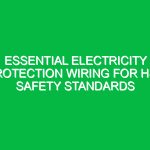Introduction
In the domain of Health, Safety, and Environment (HSE), the term “event checklist template” refers to a structured document designed to ensure that all critical Safety considerations are addressed before, during, and after an event. These templates are crucial for maintaining compliance with Safety Regulations and ensuring the well-being of all participants. Whether you’re organizing a corporate event, a workshop, or a large public gathering, having a detailed event checklist can significantly reduce risks and enhance safety outcomes.
The relevance of an event checklist template in the HSE context cannot be overstated. It serves as a guide to identify potential Hazards, implement Safety Measures, and ensure that all necessary protocols are followed. This article delves deep into the essential components of an event checklist template tailored for the HSE domain, offering insights, examples, and Best Practices to help you ensure safety success.
Understanding the Event Checklist Template in HSE
An event checklist template in the HSE context typically includes various sections that cover different aspects of safety management. These can range from risk assessments to emergency response plans. Here are some of the key elements that should be included in an effective event checklist template:
1. Pre-Event Planning
Before any event takes place, thorough planning is essential. This phase involves identifying potential risks and Hazards associated with the event. Key components include:
- Risk Assessment: Conduct a comprehensive assessment to identify hazards related to the venue, activities, and attendees.
- Safety Protocols: Develop and document safety protocols that address identified risks.
- Permits and Regulations: Ensure all necessary permits are obtained and comply with local regulations.
- Emergency Plans: Outline Procedures for emergencies such as fire, medical incidents, or severe weather conditions.
- Communication Strategy: Plan how safety information will be communicated to attendees.
2. On-Site Safety Management
During the event, active safety management is crucial. This section of the checklist should focus on:
- Safety Briefings: Conduct safety briefings for staff and volunteers to ensure everyone is aware of their roles and responsibilities.
- Monitoring Hazardous Areas: Assign personnel to monitor areas identified as hazardous.
- First Aid Stations: Ensure first aid stations are set up and adequately staffed.
- Incident Reporting: Establish a system for reporting and documenting any incidents that occur during the event.
3. Post-Event Review
After the event concludes, it’s essential to review what went well and what could be improved. This phase includes:
- Incident Review: Analyze any incidents that occurred and identify their causes.
- Feedback Collection: Gather feedback from participants on Safety Measures.
- Updating Procedures: Revise safety protocols based on the event’s experiences.
Benefits of Using an Event Checklist Template in HSE
Utilizing an event checklist template in the HSE context offers numerous Benefits:
- Enhanced Safety: A structured approach helps identify and mitigate risks, leading to safer events.
- Regulatory Compliance: Templates help ensure compliance with local laws and regulations, reducing the risk of legal issues.
- Efficiency: Streamlined processes save time and resources during event planning and execution.
- Improved Communication: Clear guidelines enhance communication among team members, ensuring everyone understands their responsibilities.
Best Practices for Developing Your HSE Event Checklist Template
Creating a robust event checklist template requires careful consideration and attention to detail. Here are some Best Practices to keep in mind:
1. Customize to Fit Your Needs
No two events are the same, so customize your checklist to reflect the specific needs of your event. Consider the venue, type of activities, and the number of participants. For instance, a large outdoor festival will have different safety considerations compared to a corporate workshop held indoors.
2. Collaborate with Stakeholders
Engage relevant stakeholders, including safety officers, event planners, and venue managers, in developing the checklist. Their insights can help identify potential hazards that may not be immediately obvious.
3. Train Your Team
Ensure that everyone involved in the event understands how to use the checklist effectively. Training sessions can clarify responsibilities and improve overall safety awareness.
4. Regularly Review and Update
Safety protocols and regulations can change over time. Regularly review and update your checklist to ensure it remains relevant and effective.
Identifying Potential Hazards and Risks
Understanding potential hazards is crucial to ensure the safety of all participants. Here are some common risks associated with events:
1. Physical Hazards
These include trip hazards, equipment malfunctions, or unsafe structures. For example, at an outdoor event, uneven terrain can lead to falls. Regular inspections of the venue can help identify and mitigate these risks.
2. Health Hazards
Consider health risks such as foodborne illnesses or exposure to extreme weather conditions. Ensuring that food vendors follow health regulations and providing shaded areas can help minimize these risks.
3. Fire Hazards
Fire safety is paramount at any event. Ensure that fire exits are clearly marked, and fire extinguishers are accessible. Conduct fire drills with staff to prepare for emergencies.
Regulations and Standards Governing HSE Event Checklist Templates
In the HSE context, various regulations and standards may influence how you develop your event checklist template. Understanding these can enhance compliance and safety outcomes.
1. Occupational Safety and Health Administration (OSHA)
In the United States, osha sets forth regulations that govern Workplace Safety. Events organized in a workplace setting must adhere to these guidelines, ensuring that all safety measures are followed.
2. Local and National Regulations
Beyond OSHA, there are often local laws governing public events, especially those held in outdoor spaces. Familiarize yourself with these regulations to avoid potential fines or other legal issues.
3. Industry Standards
Depending on the nature of your event, industry-specific standards may apply. For instance, events in the healthcare sector must comply with stringent safety and health regulations.
Conclusion
Creating an effective event checklist template within the HSE framework is a vital step in ensuring the safety and success of any gathering. By taking the time to identify potential risks, develop safety protocols, and engage relevant stakeholders, you can significantly enhance the safety of your events.
In summary, the importance of an event checklist template in promoting health, safety, and environmental Sustainability is clear. It not only helps in compliance with regulations but also fosters a culture of safety among participants. As you plan your next event, consider the insights shared in this article and take proactive measures to ensure a safe and successful experience for all involved. Embrace the responsibility and lead the way in safety excellence.


